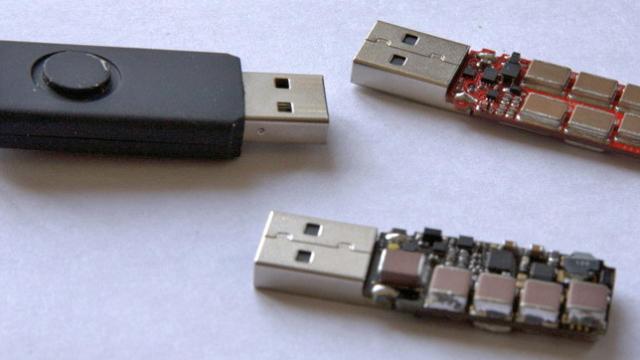The last thing you ever want to do is connect a random flash drive you’ve found to your computer’s USB port. But a security researcher who goes by the nickname ‘Dark Purple‘ has created an even more dangerous flash stick that can physically destroy your computer — not just infect its drives.
The USB killer v2.0 features a DC-to-DC converter that charges a set of capacitors hidden inside once it’s been plugged into a USB port. That energy is then redirected back into the device as a 220-volt electric surge, again and again, until the hardware completely fails.
The innocuous flash drive has the potential to not only destroy a computer’s USB port, but the motherboard it’s attached to, and even the machine’s processor and other connected components. In this video an old IBM ThinkPad barely lasts a couple of seconds after the flash drive was plugged into it, and while the hard drive and all the data on it survived, its motherboard needed to be replaced.
But since the USB killer v2.0 isn’t reliant on the successful installation of a trojan or virus to cause any damage, it can actually be used to destroy more than just computers. Any device with a USB port, which is almost everything these days, is susceptible to damage from the flash drive.
So moving forward, if you ever happen to find a random flash drive, it’s a good idea to not even pick it up, or even glance in its direction. Who knows what evils it might be capable of.
[Habrahabr via Ars Technica]
